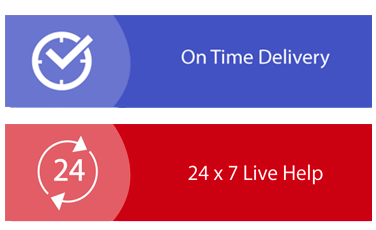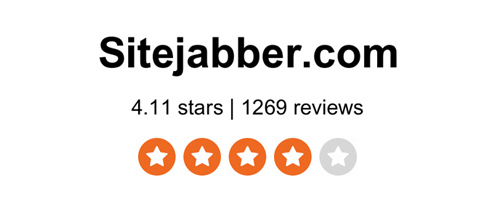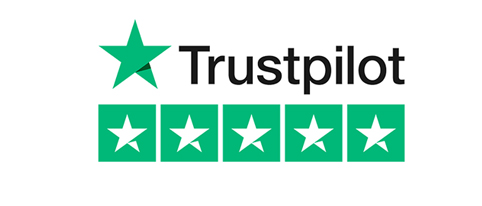PSYC20038 Positive Psychology Assignment Sample
Assignment Brief
Assessment - Critical Review and Future Research Recommendations
Task Description
In this final assessment, you will source and critically evaluate two published empirical research articles, and develop a future research question based on your critical evaluation of these articles.
The two articles critically evaluated will be your choice, but must be:
a) Peer-reviewed primary source journal articles (i.e., articles reporting new research findings from an original empirical study conducted by the authors - not a review article). The articles must be published in reputable journals.
b) Relevant to one specific area of interest in the positive psychology/ wellbeing/resilience domain, but this must be a different area of focus than the choice in Assessment 1. You will source two journal articles each reporting an empirical study relevant to the chosen area of interest, ensuring that you have not previously critiqued these journal articles in this unit or other units in this course.
Please note: Assessment 3 must be completed individually., i.e., alone. It is an independent assessment piece and you cannot work with other students/people to complete it.
Your ‘critical review and future research recommendations’ assessment piece will include consideration of the following:
1) What is the predominant area of interest for the researcher/s, and why is the area considered important? (This will become the basis for the introduction.)
2) What are the main research questions in each article?
3) Compare and contrast the methodologies used by the researchers in each article (how were their samples, research methods, procedures, measures similar and different to each other?)
4) What are the key findings in each of the research publications, and do they appear to be justified? (Are the conclusions drawn justified based on the evidence gained in the study?)
5) What are the strengths and limitations of each of the chosen research publications? (This critical appraisal should be more than a repetition of the limitations that the article authors report themselves)
6) A critical evaluation of the suggestions made by the researcher(s) for future research (i.e., critique the appropriateness of the suggestions for future research that were made by the study authors, and whether other suggestions could be warranted)
7) Identification of an important ‘gap’ in the research literature (based on the 2 chosen publications) that you propose could be further explored in research, and a justification for why this proposed future research would be worthwhile (e.g., Why is this future research important?
The maximum word count for this assessment task is 2000 words (+/- 10%).
Assessment Criteria for assignment help
Using a marking rubric, your Assessment 3 submission will be assessed on:
• Identification of the predominant research area of interest in the empirical studies, and their research questions
• Quality of comparing and contrasting of the research methodologies used in the studies
• Ability to summarize, interpret, and critique the reported research findings in the studies
• Quality and comprehensiveness of the identification of the strengths, weaknesses, and future research directions
• Critical analysis of key gaps/areas for further research based on the chosen articles
• Rationale as to why the identified gap would be of benefit to address in future research
• Development of a meaningful research question using the principles of the PICO/PEO (Population, Intervention/Exposure, Comparison, and Outcomes) style framework
• Clarity, conciseness and quality of written communication and critical thinking in the assessment piece, and adherence to the word-limit
• Correct use of APA referencing style for in-text citations and the reference list.
Tips on how to critically evaluate research articles are available in Weeks 8-9 Moodle Workbook, and under the Assessment section of the Moodle page.
Assessment criteria and marking rubric for this assessment are shown on the following page.
Due date: Week 12, Tuesday 5 October 2021, 5:00pm AEST (QLD time).
Submission of Assessment 3 will be comprised of the following parts:
a) A word.doc containing your written work. The first page of the word.doc must be a title page containing your name and student number. (The APA style website contains an example you can follow)
b) The pdf files of the two chosen empirical research journal articles that you critically reviewed for Assessment 3.
Solution
Introduction
In this both researches Mahsud et al. (2010) and Sosik et al. (2019), these both papers are still focused on to identify the leader's empathy and their ethical values. On a similar note the relation related behaviour and the good leadership behaviours based on several variables that are directly related with leader-member exchange quality are also included in this two research paper. It is true that both the papers essays and leaders' empathy and ethical values as well as relation oriented behaviour but this paper does not include how the variables are directly related in the LMX situation. It has been identified that the relationship and testing the proposed and described variables are also resulting in the leaders’ relation oriented behaviour. From this it can be stated that the relationship between leaders' empathy basically mediates the ethical relationship and leadership.
It is true that there are several recommendations present based on future research to verify and extend all the results that have been provided by the findings. Also it is recognised that these findings are providing the primary support that triggered in the mechanism forgetting the positive outcomes and also so the research conducted on the officers who have a high level of self-control and also have honesty in them. It also has been identified that the implication and future theory development as well as research and practice are also important topics to understand the interpersonal relationship and their potential influences on the business. These studies are also providing gaps that particularly help to answer the research questions based on strong ethical leadership and the leaders having antecedent characters.
Research questions
In the first research paper, Mahsud et al. (2010) explore the leader's behaviour is directly related to the quality and also how the leader's empathy is having a direct relation with the use of relation-oriented behaviour. On the other hand, in this research by Sosik et al. (2019), mainly focused on identifying all the gaps and the questions asked whether the strong leadership is directly associated with leader’s antecedent character and what are the strength and leader outcomes for the leaders having high and low levels of self-control. On a similar note, the researcher also tested how the ethical leadership meditates different leadership relations and the models also explicate how the leader's nature of character are directly related with ethical relationship and impacts the leadership outcomes (Asif et al. 2019).
Research hypothesis of the articles
This following hypothesis is stated by Mahsud et al. (2010);
H1: The LMX quality is directly related with leader’s behavior focused on relation orientation
H2: Relation oriented behavior is positively influence the use of leader’s empathy
H3: The leaders’ empathy based on LMX providing the effect on leader’s relation orientation
H4: Leaders who have good ethical values using more behavior directly related with relation oriented
H5: It has been identified that the ethical leadership mediates the leader relation oriented behavior directly based on LMX These following hypotheses are stated by Sosik et al. (2019);
H6: Ethical leadership are mainly mediating the relationship between the honesty of leader and the positive outcome of leadership as well as psychological flourishing and the leaders in role performance
H7: Ethical leadership mainly maintains the leadership and also measures the leaders out came directly based on psychological processing and there in role performance
H8: It has been identified that there is a positive relationship present between the leader’s honesty and the leaders ethical values and these things are impacting the leader’s self-control
There are a total of 9 hypotheses present in the paper written by Sosik et al (2019), from those 9 hypotheses a total of three hypotheses has been selected as this hypothesis are clearly stating the ethical leadership and the relationship between leader’s honesty and outcomes. Note from the paper it has been identified that ethical leadership mediates the relationship between their sympathy and leaders’ outcomes. It also has been identified that these hypotheses have their own psychological and in role performances and also it concludes that leadership is much stronger when leaders have a high self-control. These things are directly related to the studies provided and that is why these three hypotheses have been selected.
Methodology
Table 1: Methodology comparison
Key findings
The key findings for this research Mahsud et al. (2010), were leaders’ relationship-oriented behaviour can mediate the relationship between the leader empathy on the leader-member exchange quality and also partially mitigate the link between the ethical leadership. In the research findings, also recommended for future research is that it helps to verify and extend the results has been provided. As suggested by Ko et al. (2018), after getting the results from the regression analysis and SEM pet analysis, it has been identified that there is several evidence are present on the leaders and empathy and ethical leadership values as well as relation oriented behaviour as well as the antecedents of the LMX. On the other hand, this leadership behaviour is directly influenced by the leaders' perception and attribution regarding loyalty and dependability.
On the other hand, the key findings from Sosik et al. (2019) were consistent with the theoretical consideration that helps to determine all the moral courage in the organizations. It is also related with higher level of psychological flourishing and that role of performance providing. There are several exceptions that have indirect effect on the enrolment (Qing et al. 2020). On a similar note, these findings also provide a deep insight into motivational mechanism that is directly elevated by adapting the different actions to help the empathy.
Strengths and limitations
In this research, Mahsud et al. (2010), there are several limitations present in this study as the study is based on exactly the same data and the result pattern also supports the interpretation based on causal relationship. It also has been identified that the casualty cannot be determined by conducting any survey and also using the same respondents can help to support the same interpretation. In this study the leader's empathy can be mentioned as they are single subordinate perspective has been used but the leader sympathy rating also generates evaluation of the leader but the alternative of the leaders waiting are also subject to bias. In the hierarchical multiple regression analysis, the partial mediation model was also provided that showed the step of LMX that has been reduced to the leader's empathy and in the ethical leadership (Benevene et al. 2018).
Sosik et al (2019), there are several strains and limitations that have been present in this study and also a gap in ethical leadership has been provided by examining the honesty and empathy as well as moral courage is to the ethical leadership. On the other hand, the leaders outcomes and improved performance as well as psychological furnishing that provides the limitation of the study and future research is must to consider the character strengths from the leaders and subordinate perspective that may be limiting the leaders self-awareness and character strengths. On a similar note the limitations are mainly concerning the ethical leadership rating and it is not subordinates for each leader. On the other hand, the single subordinate ratings are types of descriptive results that are mainly followed by leader subordinate dyad. It is possible for leaders to have a list of subordinates to evaluate the ethical leadership in the most favorable way.
Future research evaluation
For the first research, Mahsud et al. (2010), it has been identified that future research can be conducted on ethical leadership that includes the others. It will also be very useful to ask the leaders about their values and check their agreement as well ratings.
For this research onSosik et al. (2019), in future research, it is very much important to assess the leadership character strengths from the leader's perspective and also subordinate perspective. The self-awareness of leaders and their character strengths also needs to be measured, and the limitations concerning the ratings of ethical leadership must be included in future research (Kock et al., 2019). For the future research 50 leaders from the different IT companies will be select as a target population to understand the leader’s character strengths. The exposure variables will include in the future research are leaders’ empathy and LMX and on a similar note the outcome variables will be relation behaviour and this will help to understand the leaders character strengths.
Research gap
The literature is based on character and ethical leadership and there are several gaps that have been identified but still remain unaddressed. It has been identified that most of the theories consist of social learning and social exchange having two theoretical frameworks that mainly explain ethical leadership and also helps to promote the subordinates to provide proper benefits to organization. It also has been identified that through the ethical role modelling the organizational benefits can be increased that also incorporate the feelings of fairness and trust. It is true that the conceptualization of the different ethical leadership are mainly results of exclusive emphasis and this evaluation of effectiveness of any particular leader and also called for additional research to identify the effects of ethical leadership on attitude and performance of the leaders. Prove that on different conditions the ethical leadership stays limited and they are becoming emerging topics that are perceived as ethical conviction. However, it is true that leaders' personal resources are coping up with stress by reducing self-control and it also has been identified that the ethical leadership boundary conditions are also based on different theories but still these theories are not tested. It is true that a gap of research is present to identify the leaders will be in a stressful nature especially in the context where ethical compliances are involved and change management and extreme dangerous missions are also included.
The gaps are present in this study Mahsud et al. (2010), as all the data was taken from a similar source, and the pattern stated in this research supports the interpretation of casual relationship whether it doesn't have the proper determination from the service study on which the data has been taken from the different respondents at the same time.
Future research question
These two research papers have population-based studies that show the leadership effects and orientation-related behaviours. It also demonstrates the leadership character strengths and leadership outcomes. The sample size will be the 100 employees from the different organisations. The future research questions are famed by using the PICO framework. In this future research questions also the research gasp is included.
1. How the leaders can effectively get the inside about career aspiration and job attitude?
2. How to fill the surveys and who will be the next subordinates of the leaders?
3. How the leaders can understand the talents and potential of their employees?
4. How much confidence the potential leaders have in their employee to complete the whole work?
5. Are the leaders being agree to extroverts to help the company during the difficulties?
6. What is the potential relationship with the leaders to their subordinates?
7. Whether the strong ethical leadership associated with leader and dissidence character strength or not?
8. How to test ethical leadership mediates and the relationship?
9. Why the military contacts are dangerous and extreme for the business and how they are promoting the professionalism?
10. How office leaders are promoting professionalism and ethical leadership as well as implementing honesty in social cognition?
11. How do the outcome variables such as relation behaviour help to understand the leader character strengths?
12. How to verify the research results on leader member exchange qualities and testing the proposed model?
Conclusion
This paper has explored the leader's sympathy and ethical values as well as relation related behaviour for good leadership and also examined how these variables are directly related to leader-member exchange quality by critically comparing the articles by Mahsudet al. (2010) and Sosik et al. (2019). Thus, it can be concluded that the impact and ethical values as well as relation-oriented behaviour is very much important for the leaders that can be useful to develop and reward the leaders. Therefore, the organisation can select the leaders who have good character strengths and also have psychological well-being. Future research based on the considered articles can be considered to identify impact of leadership skills on job related outcomes of subordinates.
References
Asif, M., Qing, M., Hwang, J., & Shi, H. (2019). Ethical leadership, affective commitment, work engagement, and creativity: Testing a multiple mediation approach. Sustainability, 11(16), 4489.doi:10.3390/su11164489
Benevene, P., Dal Corso, L., De Carlo, A., Falco, A., Carluccio, F., &Vecina, M. L. (2018). Ethical leadership as antecedent of job satisfaction, affective organizational commitment and intention to stay among volunteers of non-profit organizations. Frontiers in Psychology, 9, 2069.doi.org/10.3389/fpsyg.2018.02069
Ko, C., Ma, J., Bartnik, R., Haney, M. H., & Kang, M. (2018). Ethical leadership: An integrative review and future research agenda. Ethics &Behaviour, 28(2), 104-132.DOI:10.1080/10508422.2017.1318069
Kock, N., Mayfield, M., Mayfield, J., Sexton, S., & De La Garza, L. M. (2019). Empathetic leadership: How leader emotional support and understanding influences follower performance. Journal of Leadership & Organizational Studies, 26(2), 217-236.https://doi.org/10.1177/1548051818806
Mahsud, R., Yak, G., & Prussia, G. (2010). Leader empathy, ethical leadership, and relations?oriented behaviors as antecedents of leader?member exchange quality. Journal of Managerial Psychology.DOI 10.1108/02683941011056932
Qing, M., Asif, M., Hussain, A., & Jamaal, A. (2020). Exploring the impact of ethical leadership on job satisfaction and organizational commitment in public sector organizations: The mediating role of psychological empowerment. Review of Managerial Science, 14(6), 1405-1432.DOI: 10.1007/s11846-019-00340-9
Sosik, J. J., Chun, J. U., Ete, Z., Arenas, F. J., & Scherer, J. A. (2019). Self-control puts character into action: Examining how leader character strengths and ethical leadership relate to leader outcomes. Journal of Business Ethics, 160(3), 765-781.doi.org/10.1007/s10551-018-3908-0
GDECE103 Language and Literacy Assignment Sample
Need Report for Assignment Help:
Write a report that evaluates contemporary play-based language and literacy theories and practices for use in the home, the community and in early learning education environments and reflect culturally appropriate practice. How can teachers, families, and professionals in other fields, work together to promote the literacy growth and development of diverse young language learners in inclusive settings?
Criteria
• Discuss contemporary theoretical perspectives on early years language and literacy
development (i.e. particularly focus on cognitive developmental, social interactionist). Refer to relevant literature.
• Discuss how can these theories inform the practices in home, community and early childhood settings. Based on these theories, how can family members and educators support children’s language and literacy development? Refer to relevant literature.
• Discuss how can educators and parents can support language development of children from
diverse cultural backgrounds? Please provide 2 strategies about supporting children’s language and literacy development in home and early childhood settings
• Academic English expression and referencing – APA style.
• Minimum 5-7 references.
Solution
Early childhood development
The stage of early childhood development is crucial for promoting the overall growth in young children, marking a significant time period of learning and literacy achievement and equality among all. The need for establishing a strong base in the early childhood days is often realized by the education providers as well as parents, the two elements who are in constant touch with the children. The theoretical frameworks established by conventional philanthropists and psychologists have been undergoing transformation, thus imbibing innovative and new views to early childhood language and literacy development (Powell & Smith, 2017). The need for regular involvement in various language development activities and experiences for better futuristic output is also evident in the various theoretical frameworks. Starting from the very onset of early childhood and not waiting until the child matures have been observed to implement better development of language and literacy, both written as well as oral skills (McLachlan, Fleer & Edwards, 2018).
Contemporary theoretical perspectives on early years language and literacy
The contemporary childhood practices and their perspectives regarding inculcation of languages, literacy, and cognition along with social behavior have undergone a wave of change through the years.
Cognitive Theory
Highlighting the cognitive-developmental perspective as proposed by Swiss psychologist Jean Piaget, who has extensively studied early childhood and implied on various developmental stages, the learning of language development is also inevitable. Piaget had thrown light on the interdependence of cognitive development and language development, both functioning amicably and developing through activities (Bormanaki & Khoshhal, 2017). Children take an active role in learning from the surrounding environment and make observations about the world. As children start interacting with the world outside and around them, the more they learn and develop various language skills and literacy. Unlike what traditional Maturist theories showcased regarding the appropriate age of language and literacy development in children as six and a half years, the contemporary theories reflect the opposite. In the middle of the 20th century, the language and literacy theories received a boost of reconceptualization, proposing that children are born with the ability to read and write (emergent literacy theory). Piaget marked the era with his modern views and proposed that children use their maturational abilities to develop and progress upon their language and literacy since early years (McLeod, 2018). Hence, it is advisable for the teachers, education providers as well as parents to offer more environmental experiences for the children to grow upon. The contemporary theorists inflict importance upon the reading readiness in the early stages of children.
Social Development Theory
Along with cognitive development, the contemporary theoretical perspectives include the involvement of the social development theory based on Vygotsky’s proposals. The main element behind this theory is the concept of how early children interact with their social environment and culture, which affects their development and mental abilities. The regular social interaction of the children with the intangible surrounding and the tangible people influences their development regarding language and literacy as well. The various forms of knowledge which are generated within the socio-cultural backdrop have a big contribution to play in early childhood learning and development (Farida & Rasyid, 2019). This concept is also entwined with the social context of play language which includes early childhood activities like playing, coloring, reading, drawing, and others. The play language involves the activity which instigates mental and physical activity with spontaneous, creative, and joyful output (Daubert, Ramani & Rubin, 2018). The contemporary theories imply the use of various literacy-related plays, shared story reading, along with other activities, enhancing early childhood progress.
Role of Play in language and literacy
The modern theories regarding language and literacy have been functioning as a helpful framework for reading instructions and related activities. The recent emergent theory has combated the concept of maturity and reading readiness in children with which they are born with. Play is a natural process of activity that children do not acquire but rather have inside them from birth and early infancy stages, which can be used as an influential tool to develop emotional, social, cognitive, physical, and cultural skills (Quinn, Donnelly & Kidd, 2018). The early stages in childhood witness the children playing with objects which leads to higher problem-solving abilities and a positive attitude towards life and the world. Creative thinking, cognitive development, and exploration can be adopted by children in their early childhood days through the medium of contemporary practices and theories of play-learning. Both Piaget’s and Vygotsky’s ideologies were similar in the platform of literacy and language development within the children during their infancy and early childhood days. The ambiance and surroundings instigate the children to form concepts and assumptions, be it either real or virtual, along with expressing their thoughts and emotions.
It is often observed that the children who lack the ability to use inter-communicative language and have a poor literacy base, often make use of physical movements and objects to express themselves. Hence, the concept of adopting a vital language skill along with literacy abilities will help children to grow into fully developed human beings, having competence and all-rounder abilities or skills. Successful reading and literacy can be derived in the later stages of development if the base of the language development is strongly instilled within the young minds (Hà, 2020). On the other hand, children having a lack of language skills or delayed literacy often face risk in the social gathering and communicative spheres along with poorly developed cognitive, empathetic, physical, and emotional stringent.
Theories helping in-home or community practices for children’s development
The various contemporary preaches and theories discussed earlier have been guiding the development of children within the family or home literacy movement as well. The home environment is equally important to the educational or academic environment, both influencing the growth and uprising of the children. Sensitivity is imbibed within the family environment, educating parents and other family members to be aware of the language skills and development of the children (Piasta et al., 2017). Teaching and implementing various literacy activities and abilities within the children becomes an agenda of the family members, teachers, school staff as well as the community as a whole. The peer and community, irrespective of their knowledge of the various theories proposed by popular psychologists and theorists in the pre-modern and post-modern era, automatically tend to undertake activities for the betterment of the children and their development. The social environment which the adults try to create and recreate in the presence of children has its links with the social development theories.
The education providers understand the importance of experience and witnessing incidents to gain skills, hence the classroom or school environment is built likewise. The involvement of various literacy and language activities is observed which bear resemblance with play language, including writing, drawing, playing, story reading, drama, singing, and dance. The idea of language acquisition is proved accurate when the heterogenous mix of children is observed in a class (McLachlan Fleer, & Edwards, 2018). Each child has a different background and is hence a byproduct of various environmental confluence. The concept of babies being born with language skills is supported by the fact that children tend to differentiate between their mother’s language from the rest of the family members. They can also discriminate between various sounds and phonemes which are included in every kind of language. The cultural environment of the family and classroom also shapes the language development of the children. Before a child gets admitted to the school, it is wholly the influence of the family and house that molds the literacy skill of the child, thus we see a variety of differentiation within a class, with one child varying from the other.
Support of family members and educators by using contemporary theories
Social pragmatism has a pivotal role in influencing language and literacy development in children. As literate citizens of the country and wanting a better future for the upcoming generation, it is essential to support and provide encouragement to the children during their early learning days. The parents, members of the families as well as educators in various educational institutes can take up the responsibility of helping the children to develop their language and skills (Sainain et al., 2020). The parent involvement in the various non-academic, as well as academic activities of the children, can prompt a heightened increase in the acquisition of literacy and language development within the young minds of the early school children. Several studies have also observed that there is an intimate connection between the various literary resources in the home backdrop which has been helping in the development of language acquisition and children’s reading skills. The parents and educators equally play a vital role in inspiring and pushing up the level of language and literacy skills.
The teachers are encouraged to adopt various practices which will bring transformation in the developmental stages of the children based on the conventional theories and frameworks. Deriving an elaborate idea about the individual child’s cultural and family background will keep the teachers informed about the various aspects involved in their individual development (Piasta et al., 2020). It is the duty of the teacher to comprehend the abilities of the child according to their own pace of development and develop upon that. Enhancing the partnership and mutual understandability between the home and the school is crucial for the betterment as well. Children who do not possess any formal education or belong to the lower rungs of society are like a blank canvas that the teachers need to fill up. Taking remedial classes and providing extra help has always led to better results for such children without much background. The teachers, as well as the parents, can also include certain exercises in the daily activities of the children to infuse more language abilities (Piasta et al., 2020). Helping children to read aloud, irrespective of the themes and faults made, making use of literacy-based prop boxes and role-plays, having extensive conversations on various topics with the children, playing with poems and rhymes, making them read signals and labels, introducing vocabulary and various words, and providing modification and prompting helps when stuck are few ways in which help can be provided.
Providing support by Parents and educators in diverse backgrounds and two strategies
Often classrooms and schools witness the presence of a heterogeneous mixture of students or learners belonging to various diverse backgrounds and families. Culturally diverse backgrounds are often seen in our community as a society as well, due to the increase in globalization and intercultural communication (Witty, 2021). There is a rise in the admission of bilingual students in various schools, where English can be used as the common language for regular communication and interaction. To promote the ability of interaction and language skill development in the children who often belong to various backgrounds and not just to English language backdrop, the parents and teachers can indulge the children in adult conversation, communication, child-caregiver and various mediums of imparting education. In the modern era of technology, making use of various learning applications, translation apps, and YouTube platforms has been empowering children to learn various languages and linguistics skills on their own without much supervision.
The strategies which can be used by the family members as well as teachers to develop the language and literacy skills within preschool children are of various types. Since visual and interactive methods tend to have a long-lasting impact on the young minds of children, the strategy of interactive storytelling classes and reading exercises will help the children to ton up their skills (Saracho, 2017). Children belonging to various backgrounds can be given the same medium of instruction that is English, for sustained uniformity within the classroom environment. At home, the parents can conduct the same exercise in the second or bilingual medium, thus helping the child to develop a bi-linguistic approach to life. Another activity of playing games of ‘recognizing letters and alphabet at the very tender age will help in the cognitive development of the children, thus enhancing the future social interaction.
References
Bormanaki, H. B., & Khoshhal, Y. (2017). The Role of Equilibration in Piaget's Theory of Cognitive Development and Its Implication for Receptive Skills: A Theoretical Study. Journal of Language Teaching & Research, 8(5). From: https://core.ac.uk/download/pdf/266996457.pdf
Daubert, E. N., Ramani, G. B., & Rubin, K. H. (2018). Play-based learning and social development. Encyclopedia on Early Childhood Development. From: https://www.ceril.net/index.php/articulos?id=849
Farida, N., & Rasyid, H. (2019, April). The effectiveness of project-based learning approach to social development of early childhood. In International Conference on Special and Inclusive Education (ICSIE 2018) (pp. 369-372). Atlantis Press. From: https://www.atlantis-press.com/article/55917585.pdf
Hà, T. A. (2020). Pretend Play and Early Language Development—Relationships and Impacts: A Comprehensive Literature Review. Journal of Education, 0022057420966761. From: https://journals.sagepub.com/doi/abs/10.1177/0022057420966761
McLachlan, C., Fleer, M., & Edwards, S. (2018). Early childhood curriculum: Planning, assessment and implementation. Cambridge University Press. From: http://digilib.stiem.ac.id:8080/xmlui/bitstream/handle/123456789/362/Claire%20McLachlan%2C%20Marilyn%20Fleer%2C%20Susan%20Edwards-Early%20Childhood%20Curriculum_%20Planning%2C%20Assessment%2C%20and%20Implementation-Cambridge%20University%20Press%20%282010%29.pdf?sequence=1&isAllowed=y
McLeod, S. (2018). Jean Piaget’s theory of cognitive development. Simply Psychology, 1-9. From: https://www.fwsolutions.net/wp-content/uploads/2020/01/cognitive-development-theory.pdf
Piasta, S. B., Farley, K. S., Mauck, S. A., Soto Ramirez, P., Schachter, R. E., O'Connell, A. A., ... & Weber-Mayrer, M. (2020). At-scale, state-sponsored language and literacy professional development: Impacts on early childhood classroom practices and children’s outcomes. Journal of Educational Psychology, 112(2), 329. From: https://files.eric.ed.gov/fulltext/ED597343.pdf
Piasta, S. B., Justice, L. M., O'Connell, A. A., Mauck, S. A., Weber-Mayrer, M., Schachter, R. E., ... & Spear, C. F. (2017). Effectiveness of large-scale, state-sponsored language and literacy professional development on early childhood educator outcomes. Journal of Research on Educational Effectiveness, 10(2), 354-378. From: https://digitalcommons.unl.edu/cgi/viewcontent.cgi?article=1210&context=famconfacpub
Piasta, S. B., Park, S., Farley, K. S., Justice, L. M., & O'Connell, A. A. (2020). Early childhood educators' knowledge about language and literacy: Associations with practice and children's learning. Dyslexia, 26(2), 137-152. From: https://files.eric.ed.gov/fulltext/ED593434.pdf
Powell, S., & Smith, K. (Eds.). (2017). An introduction to early childhood studies. Sage. From: https://books.google.com/books?hl=en&lr=&id=WDI9DwAAQBAJ&oi=fnd&pg=PT49&dq=early+childhood+development+theories&ots=pn0DRy3E0z&sig=ui0KfNacFsOTEkEPGzm2J2GJEV0
Quinn, S., Donnelly, S., & Kidd, E. (2018). The relationship between symbolic play and language acquisition: a meta-analytic review. Developmental review, 49, 121-135. From : https://pure.mpg.de/rest/items/item_2602612_9/component/file_3001229/content
Sainain, N. S. N. M., Omar, R., Ismail, H., Mamat, N., & Abdullah, R. (2020). Parental knowledge and development of languages and literacy, communication and socializations in the early childhood education. Master of Education in Sultan Idris Education University. From: https://www.researchgate.net/profile/Hazhari-Ismail-3/publication/341579315_Parental_Knowledge_And_Development_Of_Languages_And_Literacy_Communication_And_Socializations_In_The_Early_Childhood_Education/links/5fd4e0e5299bf14088042e3a/Parental-Knowledge-And-Development-Of-Languages-And-Literacy-Communication-And-Socializations-In-The-Early-Childhood-Education.pdf
Saracho, O. N. (2017). Literacy and language: new developments in research, theory, and practice. Early Child Development and Care, 187(3-4), 299-304. From: https://www.tandfonline.com/doi/full/10.1080/03004430.2017.1282235
Witty, E. A. (2021). EDUC 2134 Language and Literacy in Early Childhood. From: https://repository.yu.edu/handle/20.500.12202/7628
EDUC8731 Motivation, Cognition and Metacognition Assignment Sample
Assignment — Cognition & Metacognition
Weighting: 50%
Length: 2000 words
Part A: Learners are cognitive
Applying theory to practice
(1) Very briefly outline your sequence of instruction, then,
(2) Explain in detail how the steps in the sequence address different stages of information processing.
Be very brief in section (1) and give most attention to section (2)
Part B: Learners are meta-cognitive
Please stay within the word limit in your assignment response.
• Aim of assessment
- Explain key constructs in cognition and metacognition
- Analyse how cognition and metacognition affect learning and problem solving
- Relate an instance of student learning to extant theories about cognition and/or metacognition
- Contribute to informed debate about teaching and learning
- Demonstrate high standards of academic literacy
Solution
Part A: Learners are cognitive
Sequence of Instruction
The sequence of instruction for assignment help can help students in gaining a brief overview of the topic at first alongside learning objectives of the lesson (Wyer Jr & Srull, 2014). This instructional sequence for teaching the topic of “Marketing Mix” to students will consist of the following:
• Watching any video of marketing mix over video to acquire an idea on the topic,
• Whole-class discussion amongst students about the information they have gained,
• Reading the chapter 2 from pages 45 to 50 of the book: Kotler, P. and Keller, K.L., 2016. A framework for marketing management. Boston, MA: Pearson.
• Trying to answer the questions at the end of the chapter
• Discussing the answers in class by forming groups of four
Stages of Information Processing
Information processing refers to the idea of humans actively processing information that they receive through their senses (Wyer Jr & Srull, 2014). Here, the student after taking in the information, stores it as the sensory storage, thereby moving from short-term to working memory. This information is either forgotten or transferred to the long-term memory after that. There are various stages of information processing in students or humans, namely, attending, encoding, storing and retrieving (Lachman, et al., 2015). Thus, students go through these four stages while processing any information received in class.
Attending is the first stage of information processing. Here, the students are expected to listen and pay close attention to the instructions being provided in the class. Such active listening is essential for preparing themselves to receive the information or instruction that the teacher has given (Eggenberger, 2021). Here, the students pay attention to the things that they are supposed to do, such as, watching videos, reading, engaging in discussions and completing the questions and answers. In this regard, the teacher can verbally inform the students about the activities that are supposed to be done in the class for covering the required chapter. On the other hand, the teacher can also present the instructional sequence in a visual format by showing it in a PowerPoint slide (Mathew & Alidmat, 2013). Visual instruction sequence and planning can be more effective here as it tends to capture the attention of individuals more easily as compared to verbal instruction. Thus, this is the first stage of providing instruction and students attending to them.
The second stage of information process is encoding where the recipient tries to comprehend the information or message that has been shared. This step is not possible without the accomplishment of the previous step of paying attention or placing importance on the information. In this regard, the students make sense of what they are supposed to do based on the instructions provided (Klahr & Wallace, 2022). They focus on comprehending the instructions of watching video, reading chapters, discussion and answering the questions. In this stage, they also try to clear their confusions regarding the instructions or tasks that they are required to perform. Here, the teacher provides support and help to the students for enabling them to better understand their responsibilities during the class and about their homework. Students can ask questions to the teacher for clearing their confusions and further analysing the instructions that have been shared with them (Capps & Crawford, 2013). Thus, active cooperation from the teacher is of utmost importance at this stage.
Storing is the third stage in the information processing where the information or message enters the memory bank of the individuals that is called upon at some other time. Here, the information can either enter the short-term or long-term memory of the humans (Norris, 2017). The information can also be forgotten but if not, then it moves to the long-term memory. The teacher passes the instruction to the students based on the sequence mentioned in the above section. Students are required to act based on such instructions. In this step, they undergo the process of retaining such information after receiving and understanding the same. This is the consecutive step to encoding the information (Wyer Jr & Srull, 2014). Here, students who are able to encode the information effectively can retain the instructions in their memory, which them passes to their long-term memory. However, if they are unable to decode the instructions, then the information passes to the short-term memory and ultimately gets forgotten. In this stage, the students will prepare themselves for following the instructions of watching a marketing mix video and reading the chapter from the book. They focus on gaining insights on the particular topic that they are supposed to learn. Thus, this determines their ability to follow the instruction by storing it in their memory for gaining knowledge from the videos and books.
The last stage involves retrieving the information received to conscious awareness. This retrieval is essential for using the acquired information. In this stage, the students use the information by retrieving it at two different times. They retrieve the information about the instructions provided in class and accordingly, start watching the tutorial video on marketing mix and further reading this chapter on the mentioned book. Without attending, encoding and storing the information in long-term memory, this step cannot be completed (Bruning, et al., 2010). Furthermore, the students are also gaining insights and information about the marketing mix topic by reading the specific chapter and watching a video. These insights are retained again in the memory after comprehending them to be used for answering the questions at the end of the chapter. Moreover, information retrieval is also performed by the students when they engage in classroom discussions conducted on the topic of marketing mix.
Part B: Learners are meta-cognitive
Metacognitive Activity
Metacognition involves thinking about things associated with a person’s awareness alongside the ability of evaluating and organizing own thinking (Anwari, et al., 2015). Individual metacognitive activity has often been developed through effective social interaction where the discussion or conversation acts as the main tool for supporting such activity. Here, a reciprocal relationship and involvement of two or more members is required for solving problems together through the social interaction (Anwari, et al., 2015). In this regard, the three fundamental elements involved in the metacognitive activity of problem solving are awareness, regulation and evaluation. Thus, these elements help in developing problem solving strategies for responding to problems through metacognition. Furthermore, metacognitive strategies are different sequential processes used for controlling cognitive activities for achieving a cognitive goal (Ghasempour, et al., 2013). These processes are capable of regulating and supervising learning of the students or individuals through cognitive activities of planning, monitoring and checking outcomes. It has been opined that metacognitive strategies are required to be taught despite such knowledge being instinctively obtained from parent, classmates, relatives or others (Ghasempour, et al., 2013). Thus, learning about metacognitive strategies help in enabling students to monitor their own learning and further improve self-perceptions and motivation.
Ways to Enhance Students’ Metacognitive Activity
There are various ways for enhancing metacognitive activities of students that help in building their metacognitive skills including knowledge, practice, experience and intelligence. In this regard, STEM education is one of the most influential approaches for motivating students to become self-regulated learners (Anwari, et al., 2015). This education helps to engage students in metacognitive activities. This implementation of STEM education in the classroom can provide student with opportunities of comprehending the importance of integrating different disciplines and applications. It involves designing solutions for different real-world issues and problems, thereby improving metacognitive skills of the students (Anwari, et al., 2015). Here, STEM education activities can be undertaken consisting of scientific processes and engineering design. Alongside thus, concept map, taking notes and discussion, complex learning of unfamiliar problems and issues and scaffold instruction are some of the activities involved in STEM education that can help in improving metacognitive skills (Anwari, et al., 2015). Thus, this innovative approach of complex learning can help in enhancing metacognitive activities amongst students.
Furthermore, metacognitive reading strategy can also be undertaken for the students. This reading comprehension strategy can be beneficial in generating a positive effect on the students’ learning of a second language. Learners can also acquire the required skills for effectively communicating in English (Muhid, et al., 2020). Here, metacognitive strategies also facilitate this reading comprehension, thereby promoting performance and enhancing the understanding of an individual’s reading comprehension. Thus, systematic instruction about this metacognitive activity can help the students in improving their skills. Besides, problem solving activities can help in enhancing metacognition amongst students. It focuses on the three elements of awareness, regulation and evaluation for improving metacognitive skills in students (Intan, et al., 2016). This problem solving is associated with metacognitive activities that include complex, unpredictable, difficult and new tasks requiring effective skills of the individuals.
Metacognitive activity can also be enhanced with the help of metacognitive monitoring. It indicates the process of checking cognitive activities of the students (Avhustiuk, et al., 2018). Such checking also involves ascertaining how the results can help in generating solutions for various cognitive tasks that typically include doing tests, recalling answers and reading texts. This monitoring students to evaluate their own knowledge, knowledge of conditions influencing their learning process and knowledge of cognitive strategies. It also helps in reviewing explicit judgments of individuals about themselves that facilitate development of their learning processes (Avhustiuk, et al., 2018). This activity can be undertaken in the process of reading texts or in the process of words and statements learning. Thus, the complexity of tasks involved help in enhancing metacognitive abilities of the students engaging in these activities.
Metacognitive activity can be enhanced with the help of problem solving or test in the learning activity. It records the progress of a students’ learning having different academic abilities. Along with this, inquiry-based learning can also be helpful by undertaking a constructivism approach. Here, the idea and knowledge are developed by the students themselves instead of coming immediately from the teacher (Rahmat & Chanunan, 2018). This helps in improving metacognitive abilities of the students by enhancing their learning process. Thus, this learning process involves identifying, promoting and instructing the role of metacognition amongst the students.
Metacognition scaffolding is another wat for supporting metacognitive activities and facilitating problem solving processes in the classrooms. Students receiving metacognitive question prompts are expected to perform better in problem solving processes (An & Cao, 2014). This is because they display the ability of representing problems, generating solutions, providing justifications and monitoring and evaluating their own learning process. Metacognitive scaffolds further help students in developing problem solving plans and further monitor and evaluate their own progress. This is because these are effective in improving metacognitive processes of students that include planning, monitoring and evaluation (An & Cao, 2014). They also help in students’ knowledge construction and content learning alongside other metacognitive processes. In this regard, collaborative learning can further contribute towards facilitating metacognitive interaction between students (Molenaar, et al., 2014). This interaction of sharing existing knowledge and appreciating each other’s contributions without disagreement and with demands of justification help in enhancing the metacognitive activities as well. Thus, these are some of the ways that can help in enhancing metacognitive activities in students.
Improving Metacognitive Awareness
Metacognition enables students in taking charge of their own learning, thereby becoming more aware about how they learn, evaluating their learning needs, developing strategies for meeting these needs and implementing such strategies (Bahri & Corebima, 2015). The awareness of thinking and learning process through planning, monitoring and evaluation of what is learnt can help in improving metacognition awareness. Metacognitive awareness can be improved by asking students to reflect on their knowledge and things they care about in the learning process (Jaleel, 2016). This helps in developing their awareness about themselves alongside providing valuable feedback to improving metacognitive activities. Reflecting on the learning methods and performance in the classrooms and academic achievements can also improve metacognitive awareness. Besides, posing thoughtful questions to students by enabling them to use different strategies can also help in improving their awareness about academic tasks and own learning processes (Ellis, et al., 2014). Thus, this knowledge can further contribute towards increased metacognitive awareness of the students.
References
.png)
.png)
PSY30008 Psychology of Personality Assignment Sample
Assignment Details
Emotion-related impulsivity and risk taking among emerging adults at university
Impulsivity involves behaviour that is “poorly conceived, prematurely expressed, unduly risky, or inappropriate to the situation and that often result in undesirable consequences” (Daruna & Barnes, 1993; p. 23) and is associated with increased behavioural problems, including substance use, addiction, and mood difficulties in both adolescents and adults. One important aspect of impulsivity is emotion- related impulsivity, referred to as the tendency to engage in impulsive behaviour in the presence of both positive emotions (positive urgency) and negative emotions (negative urgency). Both positive and negative urgency are associated with increased risk-taking behaviour, especially among emerging adults (i.e., adults aged 18-25 years), including illicit drug use, aggression, excessive alcohol consumption, and risky sexual behaviour.
Emerging adulthood coincides with a period of significant life transitions, including enrolling at university for the first time for many young people. The combination of emerging adulthood, profound psychosocial changes, and greater range of opportunities afforded at university can result in increased risk-taking behaviour among this age group, often with adverse consequences for mental and physical health.
In this study we are investigating the role that traits of positive and negative urgency play in risk-taking behaviour among emerging adults at university.
For your assignment, you will write a lab report that addresses the following research questions:
1. Are there differences between male and female emerging adults attending university in negative urgency, positive urgency, and risk-taking behaviour*?
2. Is there an association between both negative and positive urgency and risk-taking behaviour* among emerging adults attending university?
3. Do positive and negative urgency differ in the direction and strength of their prediction of risk- taking behaviour* among emerging adults attending university?
The Assignment
Note: The maximum number of words is the absolute maximum and markers will stop reading at the word limit. The word count includes everything except the title page, Method section, tables/figures, and the reference list.
You must present the assignment in the form of a lab report containing the following sections:
Title page (required)
o Come up with an informative title for the study.
o Include your details (see HD example for correct title page format)
Abstract
o 200 words (approx.); contributes 10% to your overall mark for the assignment
Introduction
o 1000 words (approx.); contributes 30% to your overall mark
o You must include four research questions/hypotheses
- One research question/hypothesis must address differences between male and female emerging adults in your selected risk-taking behaviours.
- One research question/hypothesis must address differences between male and female emerging adults in positive and negative urgency.
- One research question/hypothesis must address the association between your selected risk-taking behaviours and both positive and negative urgency.
- One research question/hypothesis must address whether positive and negative urgency differ in the direction and strength of their prediction of your selected risk-taking behaviours.
o When presenting directional hypotheses make sure they are clearly linked to theory and the studies reviewed in your Introduction. Ensure that the hypotheses and research questions can be tested using the given data.
Method
o Must be included in your assignment but there are no marks allocated to this section.
o You can copy and paste the Method section information provided on this handout into your assignment.
Results
o 400 words (approx.); contributes 20% to your overall mark
o Includes descriptive statistics (M, SD) for the variables used in your analyses, t-tests, a correlations table, and a regression table.
o Present results according to APA 7th standards.
Discussion
o 1200 words (approx.); contributes 30% to your overall mark
o Were the hypotheses supported? Why/Why not?
o What were the outcomes of the research question(s)?
o How do the results of this study compare with previous studies?
o What are the implications of the findings for the management of emotion-related impulsivity and your selected risk-taking among behaviours emerging adults attending university?
o What are the methodological limitations of the study and how could they have affected the findings? Any future directions?
o Present a coherent conclusion.
Reference list
o Along with the quality of grammar/expression in the report, adherence to APA 7th referencing style contributes 10% to your overall mark
Solution
PSYCHOLOGY OF PERSONALITY LAB REPORT
Abstract
This study aims to explore emotional impulsivity and the associated risk-taking behaviours among adults. The relations among the personality, self-control and creativity have been investigated. However, creative performance are not related to affected or personality by directing the self-control to future research. In particular, the identification of weaknesses factors which attract negative agency across society including aggression, illegal behaviours and high consumption of alcohol. The emergency period has a significant role including the well-being of many young people and their combination of adulthood and childhood and their psychological changes and the opportunity to reactivate the desired goals path of action. This study explored the link between risk-taking behaviours and positive and negative urgency in a sample of 107 first year university students.
Introduction
The World Health Organisation (WHO) produce reports relating to risk-taking behaviours such as marijuana use, excessive consumption of alcohol, bringe drinking or sexual intercourse that influence psychological and physical health. Many countries have their own report provided by the WHO by collaborating with the national authority and further this study is related to the rigs taking behaviours in and potential level of achieving the development process of adulthood and preventing the risk in the near future (Lazuras et al. 2019). Their main goal is to identify risk-taking behaviours to minimise adverse effects related to them (Lazuras et al. 2019).
Research demonstrates that there is increasing negativity across young adults and that risk taking-behaviour is highly prevalent (Hwang et al. 2020). High consumption of alcohol is shown to lead to aggression and alcohol consumption from a young age also leads to chronic diseases. It can influence the blood pressure, stroke, , heart disease, liver disease, cancer mouth cancer, rest cancer rectum and colon as well as the high chances of weakness in the body and poor performance of the environmental development process.
The positive and negative urgency between the male and female considering the indication of positive and negative urgency creates a high rate of impulsive behaviour. The urgency in and positive factors but the emotion between the male and female about the depression and the synonym of aggression and anxiety can take a major role on the negative point of view. Positive agency for the both of sex stance with the linked factors of mini phytopathogen situation depending on the highly effective mechanism from various segment of impulsivity (Hwang et al. 2020). The negative emergency is closer enough with the substance problems, tied up with the alcohol, suicidality, disorder symptoms, and high depression areas covered and consider negative impossibility measured by the environmental factors for assignment help.
The two types of behaviour by focusing on the investigation period such as aggressive and illegal behaviours and heavy drinking are considered highly risky factors and the negative influencing factors growth of the nation.
Research Hypothesis
Hypothesis 1: There will be significant differences between male and female emerging adults in the selected risk-taking behaviours
The aggression and illegal behaviours stand with the history of abuse and discovered the violence across the nation and the aggressiveness creates a major drawback for the (Patrick et al. 2019). Due to the fact that illegal behaviours are also called and high activity of criminal activities on the other hand, detailed plans for committing violence also a sign of negative influence reading capacity across the environment related issues development process.
Hypothesis 2: There is an association between selected risk-taking behaviours and both positive and negative urgency.
The risk-taking behaviours and the positive and negative emergency between the both of male and female discussion about the two types of addressing manner high consumption of alcohol and the other addressing factors that related to the aggression and illegal behaviour approach. The survey related to addressing disrespect and high agrition comes from the highly effective behaviour on the childhood of the people. In simple words, most of the aggression and criminal activities position stands that the past experience of people overcome with the criminal activities are highly influencing factors in the future (Larson et al. 2020). The negativity surrounding the many ways of doing things in society and the environmental educated factors of production which means poor schooling and uneducated areas can develop high negative effects across the young age. The positive urgency of achieving the goal and the psychological factors related to good behaviour and the best quality of working environment can create the path of development for young people as well as the growth of the nation.
Hypothesis 4: It is hypothesized that whether positive and negative urgency differ in the direction and strength of their prediction of your selected risk-taking behaviours.
The strength and the weaknesses from the proper schooling and well-educated environment with the symptom of good working and healthy facility enlargement create the positive agency of achieving the goal of the young age psychologically. The prevention of risk taking behaviours and the conduction of campaigns mainly for the uneducated areas by the health organisation of the nation as well as the institution of well being environmental factors can create a strong environment for the growth of the nation (Kenney et al. 2018). The concept related to the development process of education can create the helping hand for minimising the criminal activities and proper uses of complex situations across the young age. The importance of a proper education system can create a helping hand for the young to maintain the proper and healthy path in order to achieve the desired goal.
Method
Participants
Participants were the students who were studying in their first year at Swinburne University of Technology. Participation was restricted with their age between 18-25 years, with the modal age of the sample being 18 years (N = 36). There were no compensation to be offered for the participation. Students who did not complete enough of the online survey to permit meaningful analysis (N = 14) were excluded from the final sample of N= 107. Eighty-six of the participants in the final sample were women and 21 were men.
Measures
Gender (Male, Female, Other) and Age (in years) information was collected for sample characterisation and demographic purposes.
Risk-taking Behaviours
The “Past Frequency” subscale of the Cognitive Appraisal of Risk Events (CARE; Fromme et al., 1997) questionnaire was used to collect data on risk-taking behaviour. Respondents were asked to report how many times in the last 6 months they had participated in 30 risk-taking activities – e.g., “Tried/used drugs other than alcohol or marijuana”, “Had sex without protection against sexually transmitted disease”, “Rock or mountain climbed”. Higher frequency scores indicate higher levels of involvement in a range of risky behaviours. In psychometric testing by Fromme et al. The Past Frequency subscale demonstrated good convergent and criterion-related validity.
Positive and Negative Urgency
The Positive Urgency and Negative Urgency subscales of the Short UPPS-P Impulsive Behavior scale (S-UPPS-P; Cyders et al., 2014) were used to measure the traits of Positive Urgency and Negative Urgency, respectively. Each subscale consists of four items – e.g., “I tend to lose control when I am in a great mood” (Positive Urgency), “When I am upset I often act without thinking” (Negative Urgency). Respondents indicate their level of agreement with each item on a 4-point scale ranging from Agree strongly (1) to Disagree strongly (4). All items on both subscales are reverse scored so that higher scores indicate higher levels of each trait. Internal consistency was good in psychometric testing for both the Positive and Negative Urgency subscales (Cronbach’s alpha = .85 and .78, respectively).
Procedure
Students completed a survey consisting of the CARE and S-UPPS-P scales online using Qualtrics. Other scales not related to the aims of the current study were also included in the survey and are not reported here. The survey was accessed via a link embedded in the Canvas site for students’ classes. Participation time was approximately 30 minutes. Students’ consent to participate was implied by their choosing to continue the study after reading the Participant Information Statement. The Statement informed them of their rights not to participate in the study, but that once they began the study they could not withdraw their data due to the anonymous nature of survey responses. They could, however, cease their participation at any time by closing the internet browser window.
Results
Descriptive Statistics
Table 1.
Descriptive table
.png)
The descriptive statistics illustrate the central tendency of the variables and their dispersion. The above table is measuring the data and helps to detect the typos and outliers that will allow to identify the link between the variables.
Table 2.
Statistics table showing Gender information
Group Statistics
a. t cannot be computed because at least one of the groups is empty.
.png)
Table 2: t-test
(Source: SPSS)
For interpreting the results of the T test it is important to find the output which is the P value of the test. In order to do the hypothesis test at a particular significance level it is significant to compare the P-value with the output of the chosen level of Alpha.
.png)
A correlation analysis revealed that gender and age were significantly correlated.
.png)
.png)
Table 4.
Standard Regression Summary Table
.png)
Discussion
This study aimed to assess the psychological personality. The results revealed that the hypothesis that was supported.
The outcomes of this research paper have multiple implications. For instance, this study contributed to the definition of impulsiveness (Carver & Johnson, 2018). The present research has focused increasingly on assessing and defining the narrow band measures for "impulsivity-like traits. Based on the findings the changes in mean level in terms of cross-sectional data implies that risk taking behaviour are the hypothesised and distinct traits that are strongly influenced through the process of neurodevelopmental aspects in adults. Some of the research suggests that risk taking behaviours are the distinct patterns for the changes in the mean level across the time and are the changes for every individual which are not related to each other (Schreiber et al. 2012). However, the present findings suggest the substantial overlapping of the changes in positive and negative urgency between men and women during their adultery such that every individual exhibits their pronounced reduction in different traits.
Emotion regulation is illustrated as the mechanism through which the individuals modified their emotions for achieving their desired goals. Many students have indicated that maladaptive regulation strategies of emotion place an important role for maintaining and developing the psychopathology which is possibly through the conflict of self regulation goals during the time of emotional distress. This conflict might result in transforming their attention far away from the long term goal of their self regulation by shifting their attention or becoming healthier for reducing their emotional dishes through an immediate relief and pleasure suggest acting impulsively or smoking (Littlefield et al. 2016). The relationship among the motion state and impulsive behaviour is supported by many neuroscience research that found a major role in terms of emotion regulation and risk taking, impulsive behaviour and decision making. This today has examined the relationship between the impulsivity and the motion regulation within the sample of the adults. Moreover the paper has been hypothesised that those of the adults with more difficulties during their emotion regulation would have high levels of impulsive behaviour and use excessive amounts of drinks, demonstrating their impaired functioning on the measures of "neurocognitive impulsive decision making".
The impulsiveness concept in this study has been a part of the psychological landscape for a long time. The methodological limitation of the study has both contributed to the psychopathology and personality property. However, this is considered as a deceptive concept which is difficult to point out. The variations in the definition are being widely used as it seems to leave all the things out such as it does not fit into the instances where the research hypotheses are unlikely to have the negative consequences (Steele et al. 2021). However, another controversy is whether it is important to think about the impulsiveness as a phenomenon class or single construct with various dynamics and origins that must be considered apart from one another. Reasons how to define impulsivity as best remaining as controversial. There are other concerns that relate to investigating the impulsivity concept and extension of other concepts. This paper illustrates the few words regarding letting commitment to the given viewpoint related to positive and negative urgency which is different to the direction and strength of the prediction of the selected risk taking behaviours.
The overlap among positive and negative urgency is consistent with the work that suggests the two facets of the higher order trait. There are various limitations existing in these findings. Firstly the measure of emotion regulation has been administered. The future study might desire to use the objectives such as subjective and physiological measures of emotions to determine various aspects and the relation with the impulsivity full stop secondly the state of emotion have pain observed with an impact of cognitive processing and further investigations have been done by outlining the current state of emotion through the impact of required impulsivity and emotion regulation. Thirdly the sample was between the age of 18 to 25 and predominantly male. Impulsivity and emotional stability has been observed to improve and minimise with age and is different based on their gender (Falco et al. 2021). Therefore this study results might not be generalised to the individuals external to the adult and also might not be accurate that illustrate the relationship among the impulsivity and emotion regulation in females. Longitudinally determining impulsivity and emotions in the sample balanced gender might help to introduce the limitations. Further, these measures may not be used accurately to capture the differences among the groups of impulsive behaviour. Besides these limitations the results are clinically important to examine the emotion regulation that will effectively help to identify the emotion dysfunction.
Conclusion
The proper data collection process in the guidelines of the nation by complying with the World health organisation report can create the good result from the negative urgency to the positivity and the growth of development process of the environment as well as the growth of the nation. The minimising the rate of aggression and criminal activities strengthens the schooling, which always finds help from the inflation rate of negative issues. The irony and the focus as well as the consistency of campaigns in the good quality of reporting factors help for the psychological changes between the 18 to 25 young age people. That is taking behaviours to attract one person to another. They have to break the chain in order to despite an effective solution through the guideline of WHO by considering the National health organisation. Additionally the effective solution in the prediction of direction as well as a strengthening by understanding the limitations of attendance and the research depends on the outcomes correlated with the result and issues. The prevention of high risk factors of production helps for the sustainable growth of the negativity issues.
References
.png)
EDUC 9136 Education Policy, Politics and Practice Assignment Sample
Task- Choose an education policy at work in your education community and design a SIDES inspired concept map to represent the policy, accompanied by a SIDES description of the policy, how you see the policy enacted, policy impact, possible unintended consequences and how you think students are experiencing/impacted by the policy OR Design your own education policy for your education community based on your sense of need using SIDES considerations presented as a concept map with a SIDES informed discussion of your proposed policy. Product- Policy Analysis Concept map with accompanying explanatory notes (Approximately 1000 to 1500 words)
Assessment 1 Title: Choose or Design an Education Policy using the SIDES Approach
Aim: Analyse a policy in your education community using the SIDES framework or design a needed policy using SIDES.
Authenticity of assessment: Policy design and analysis of policy impacting your professional life.
Instructions of assessment:
1. Produce a concept map that illustrates the SIDES dimensions of the policy under examination or being designed.
2. Explain and critique the dimensions of the policy using the SIDES approach.
Assessment Criteria:
1. Awareness of self and others as it relates to the relational, sociological and cultural dimensions of policy initiatives
2. Development of understandings of critique/design and their import in practice
3. Insight into dimensions of policy initiatives in relation to presenting needs and possible effects.
4. Ability to express and describe the components of the policy analysis with policy understanding, clarity and argumentative rigour.
5. Include a minimum of 5 citations/references from the topic literature and /or your own searches.
Solution
Policy Introduction
Policy name: Saakshar Bharat
Country: India
Specifically targeting adult women, it was created in 2020 with the goal of raising the country's reading rate to 80%. It aspires to raise consciousness about socioeconomic inequalities and how people are deprived of resources that could improve their lives. The Indian government's Department of School Education and Literacy (DSEL) has launched a program called Saakshar Bharat to improve literacy rates among Indian women. On September 8, 2020, International Literacy Day, the prime minister unveiled it. The program aims to encourage lifelong learning within communities and drastically reduce the proportion of illiterate individuals in India.
.png)
While the literacy rate in India as a whole reached 74.04% in the 2011 census, a 9.2% rise from the 2001 census, the literacy rate for women remained much lower at 65.46%, compared to the rate for men at 82.14%. The primary goal of the program is to close the gender gap in education and help the country reach the 80 percent literacy rate set by the government. Seventy million people, including sixty million women, will have access to basic reading programs as a result. The mission's stated purpose is to encourage and bolster adult learning so that those who were denied the chance to enter or finish formal school can catch up. It encompasses not just the fundamentals of reading and writing but also the more specific areas of applied science and athletics. Saakshar Bharat has been called a "people's programme" because of its focus on empowering local communities to determine the program's direction and implementation. The latest promotional film with national superstars performing a song about the Mission with a Bollywood background is only one example of a widespread effort to publicize and highlight the importance of this initiative for assignment help.
Concept Map
.png)
Figure 2 Concept Map
Policy Objectives
- First, teach adults who are illiterate or mathematically illiterate the fundamentals of reading, writing, and arithmetic. This demonstrates proficiency in reading, writing, and arithmetic. Its overarching goal is to educate its readers about the causes of poverty and provide them with tools to combat those issues on both a personal and societal level.
- To establish learning for neo-literates beyond basic literacy and provide qualification equivalent to formal educational system. Neo literate adults can gain a credential that will open doors to further education through this program. Considered from the vantage point of lifelong education, this is a major consideration.
- And third, offer technical training. Providing students with useful skill-building courses is essential if we want to raise their standard of living and employment prospects. This is accomplished in the Vocational Education stage by tailoring training for skill development to the specific needs of each learning group and the geographical context in which the target population of illiterate or low-literate adults is located (Ruben, 2021).
- Encourage a culture of lifelong learning by making postsecondary options available to neo literate adults. The programme's Continuing Education component provides neo-literates with a long-term setting in which they can use and improve their newly acquired literacy abilities. The libraries and reading rooms found in the Adult Learning Centers serve this purpose. Short-term thematic courses on topics like health, nutrition, and the environment are also offered in such settings. It makes use of a variety of printed materials collected from inside the community and selected for their relevance.
The SIDE framework
Stakeholders
The Stakeholders, in their role as Adult Education Centres, are Saakshar Bharat's operational arm, in charge of planning and executing the actual instruction. Gram Panchayats (Village Self-Government) are required to set up Adult Education Centres at the rate of one per 5,000 residents. Every community has one AEC run by a team of two paid Preraks (coordinators), of which at least one must be a woman. This exemplifies the program's commitment to promoting and reinforcing gender equality across its central implementation, planning, and management levels. The facility features a registration desk, classroom space, library, and study rooms. It's also a hub for a variety of sports, outdoor pursuits, and cultural events.
Individuals
A variety of Continuing Education Programmes are also organized in Adult Education Centres, giving people the chance to maintain literacy through the continued use of books, media, and ICTs, so contributing to the fulfilment of the overarching purpose to build a learning society. The plan's ultimate goal is to establish a supplementary system of adult education that operates in tandem with the conventional schooling structure. The AEC play a crucial role in achieving this goal of adult education within the context of a lifelong learning approach and the development of a literate society (Hillage, 2021).
.png)
Data
ICTs such as radio and television have been utilized in order to assist in the dissemination of information on the program among the target groups. The curriculum consists of Core Content (CC), which is derived from the comprehensive National Curricular Framework for Adult Education, as well as Locally Relevant Content (LRC), which is generated in the language that is considered to be the prevalent one in the area (Clarida, 2020).
In order to generate learning material that is relevant to the needs and interests of learners, the development process begins with recognizing their needs and interests. Materials for these topics are prepared by adult educators and subject matter experts based on these topics. The Quality Assurance Committee holds review sessions on a nationwide scale to analyze these at regular intervals. After the content has been finalized, it is then field-tested and amended for the purpose of making improvements before it is eventually standardized as educational material. In addition to promoting literacy, the central subject aims to raise students' levels of awareness on principles such as democracy and gender equality. In addition, the locally relevant content is connected to the learner's way of life as well as the sociocultural realities that they face. These connections include topics such as health and hygiene, agriculture, animal husbandry, and local self-government. In order to achieve basic literacy, students normally need to complete three hundred hours of instruction. Volunteers working out of local adult literacy centres carry out the day-to-day operations of the program (Mayer, 2020).
.png)
Figure 4 Literacy
Experts/Evidence
Saakshar Bharat needs to recruit a sizable army of volunteer literacy educators if it is to succeed in its goal of bringing 70 million people up to reading proficiency. Teachers, literacy facilitators, and program supervisors all participate in ongoing professional development as part of the program's commitment to strengthening its human resources. Management training is offered to key district resource workers, and in-service training is provided to volunteer instructors in the areas of local languages, teaching methods, and the practice of instructing adults. If there aren't enough qualified volunteers living in a given village, it's possible to bring in teachers from outside the area to educate while residing among the locals (Vinovskis, 2015).
An annual average of 30 students will need to be taught by one resident teacher. Using this method, the centre is open for seven to eight hours daily, and different groups of students come in for two hours or more of instruction each day. Important to the success of the Saakshar Bharat Mission is the process of evaluating and certifying the neo-literacy of its participants. The National Literacy Mission Authority (NLMA) has certified 14,438,004 adults in the United States for their literacy levels over the course of three years. Learners have the option of taking external tests in reading, writing, and arithmetic twice a year, in March and August. Each test lasts for three hours. The National Institute for Open Schooling established the criteria for the examinations. Learners' understanding of social issues and the professional world will also be tested in this way. The issuance of certificates and the public release of all findings on the NIOS website both occur within 60 days. The purpose of the evaluation is to give students credit for their hard work and open doors to higher learning (Howlett, 2020).
Conclusion
Powerful real-time monitoring is crucial to the effective operation of the Mission. Each tier of management is accountable for assessing and inspecting the subordinate parts under its purview. Saakshar Bharat is a massive undertaking, requiring the coordination of almost 200,000 different implementing entities. The National Informatics Centre (NIC) has created WePMIS, Web Based Planning & Monitoring Information System, a tailored web-based system for planning, monitoring, and impact analysis, in order to accommodate such a vast body of knowledge. To further assess the efficacy of their programs, Adult Education Centres may now keep their students, instructors, and administrators up-to-date via an online portal. Since 2011, all of the data has been available online, facilitating public participation and a better grasp of development in a certain area. By revealing data on the enrolled students, such as assessment and certification, it makes it easier for citizens to voice their opinions and concerns. With the help of the online feedback system, program managers at different echelons may assess the situation on the ground and take appropriate action. All tiers of WePMIS users have been given training. The necessary e-infrastructure, including computers and broadband access, has been installed on a regional scale, all the way down to the block level. There is a pressing need to bring these amenities to rural areas (Walt, 2022).
References
.png)
HCCSSD205 Social Justice Research Report 3 Sample
Assignment Brief
For this assessment, you will be presented with 3 resources/articles where writers present their viewpoints on a separate social issue. Your lecturer will provide the links to these articles. They can be chosen from existing resources in the weekly Modules, or your lecturer may independently source other articles on 3 different social justice issues covered in the course. You are expected to:
1) Choose a particular opinion piece/article to engage critically with. Introduce and summarise the key arguments of the author. Justify your choice of article from among those available. What inspired you to engage with this particular article?
2) Engage critically with the key arguments raised by the author. Do you agree or disagree with their arguments? Is there evidence to support or contradict the views of this author? Are the views of the author highly controversial? Do you think the author is mis-informed or well- informed about the social justice issue? Are the author’s views divisive or constructive?
3) Present your own arguments on the social issue. What is your own take on the questions or issues raised by the author? What evidence do you have to support your views? Use research, evidence, case studies to present a compelling argument.
4) Present a convincing conclusion to the issue either supporting or critiquing the views of the author.
Other points to note:
- Double-space papers throughout
- Use APA 7th edition referencing guide
- Include a minimum of 10 relevant references
- Late papers will be penalised as per Torrens Assessment policies (10% deduction of final marks per day)
- Requests for extensions must be made before the due date of the assessment (see Torrens Assessment policies).
Solution
1) Introduction and Summarization of Key Arguments of the Author
The article of El-Amin delivers a comprehensive overview regarding the challenges and opportunities associated with the implementation prospects of effective DEIB (Diversity, Equity, Inclusion, and Belonging) initiatives. However, the key arguments are included below:
- Systematic barriers: The existence of persistent lack associated with DEIB in organizations is mostly rooted in structural, organizational, institutional, cultural, systematic, and societal obstacles (El-Amin, 2022, p.213).
- Role of leadership to drive DEIB initiatives: Organisational leaders have an essential role in driving DEIB initiatives where they demonstrate a genuine commitment related to diversity and inclusion, allocate essential resources, and create a suitable culture to support diverse employees.
- Importance of data-driven approaches: Data-driven approaches are mostly effective in helping organisations identify the areas of improvement and measure the direct impacts of DEIB efforts deployed by them (El-Amin, 2022, p.218).
- Role of chief diversity officer (CDO): The CDO can be considered as one of the main assets of an organisation, especially for managing DEIB initiatives. This individual is responsible for eliminating barriers, strengthening the organizational culture, and promoting diversity & inclusion at all levels of the organisation.
Justification of the Choice of Article
This article has been selected here as it delivers a clear overview of a practical and actionable framework to improve DEIB in different organisations. The scholar, El Amin emphasized systematic barriers as well as the core need for effective leadership commitment to deal with the current challenges faced by most organizations to develop and implement suitable DEIB initiatives. It can be helpful for business professionals to gain an adequate perception of to what extent, leadership strategies must be modified to gain favourable outcomes. Apart from that, the strong focus of the article on the data-driven approaches for enhancing DEIB initiatives within organisations helps to enrich the knowledge of organizational leaders to use those approaches in the best possible way to handle the diverse employee base. The article also highlighted the importance of CDO in business firms to improve DELB perceptions and it can be beneficial for diversity officers to easily identify their influence on organisational betterment and commitment to promoting diversity. Hence, this paper has delivered the best possible understanding of DEIB initiatives and associated aspects that indicate the preference for this. Reasons of inspiration to stick with Article
One of the main reasons for sticking with the article is its potential for driving positive change in terms of DEIB initiatives within business firms. By getting a proper understanding of systematic barriers as well as the necessity behind strong leadership commitment, organisations can be able to understand the necessity of creating more inclusive and equitable workplaces. According to Vohra et al., (2015, p.354), inclusive and equitable workplaces are relevant to promote employee engagement, and innovation, attract a diverse talent pool, and increase employee retention by offering flexibility and a positive workplace culture. Hence, this type of in-depth valuable insight developed through the paper can help business leaders to deploy effective strategies for retaining their employees too for the long term. Furthermore, the emphasis of the article on “data-driven approaches” and the crucial role of CDO also provides practical guidance to implement effective DEIB.
2) Critical Engagement with Key Arguments
In the present era of globalization, it is necessary to maintain equality and diversity in the workplace so that employees from different cultures can work together and innovate new strategies to satisfy the stakeholders’ needs. As per El-Amin (2022, p.210), the lack of recruitment and retention of diverse employee bases due to the stereotypical mentality of HR managers led to inequality in the workplace. Moreover, leaders often discriminate against employees against their culture, tradition, race and ethnicity and it needs to be prevented so that organisational diversity can be maintained efficiently.
.png)
Figure 1
Factors based on which employee discrimination occurs (Self-developed)
The inclusion of a diverse employee base in a firm supports the development of modern work strategies that can assist employees in meeting organisational expectations. As per the research from secondary resources, it has been analysed that the increasing discrimination in the workplace does not provide equal opportunities for promotion to the diverse employee base. Moreover, employees felt dissatisfied in a workplace where their diverse needs were not valued and practised (Lee et al., 2021). Organisations, in the present era, often fail to develop a diverse workforce where open communication maintains transparency with employees regarding workplace policies and motivates them equally to perform efficiently. As a consequence, leaders should motivate the employees to improve their performance and work harmonically with each other to meet the organisational goals. As per the below image, it is analysed that lack of open communication and workplace discrimination leads to unstable relationships between employees and leaders for the assignment helpline Continuous conflicts between leaders and employees lower the organisational performance and it is necessary to prevent such inequality.
.png)
Figure 2
Relationship between workplace discrimination and employee-organization relationship (Lee et al., 2021, p.9)
According to Khan & Javaid (2023, p.90), racism and discrimination against culture and ethnicity demotivated the employees to stay engaged in the workplace which lowers the overall productivity of the firm. Therefore, it is essential to provide adequate training to employees so that they can be aware of the importance of cross-cultural diversity. Cross-cultural training could improve the cultural intelligence of leaders and encourage them to maintain inclusion and diversity in the workplace (Kour & Jyoti, 2022, p.2). Moreover, each and every employee must be assessed based on their performance and given an equal chance of growth irrespective of their age, gender, culture, race and ethnicity. As per El-Amin (2022, p.208), key performance indicators could be established to track employee performance so they can be given promotions. Analysis of skills and competencies of employees also provides ample scope for providing personalised training that can support growth without being discriminated against in the workplace. Senior executives and leaders of the human resource department should gather data about the performance of employees and analyse information regarding their skills and competencies (El-Amin (2022, p.216). Data-driven insights help senior managers make decisions regarding the need for training to improve the skills of employees. Data-driven analytics prevents any form of biased reports from leaders who tend to discriminate against employees based on their culture and race. Therefore, it has been analysed that modern technologies play a major role in assessing the performance of employees in improving organisational productivity which supports their promotion to higher designations. As an example, the use of big data technology supported the automatic processing of millions of data related to employee performance (Garcia-Arroyo & Osca, 2021, p.15). Big data technology can also be used to keep track of the skills and competencies of employees based on which they can be promoted in an organisation without discriminating against race, sex, gender and culture.
A diverse workplace has a higher potential of innovating modern strategies to satisfy the changing market trends. As a form of social justice, equality must be ensured in a workplace so that every employee can enjoy basic human rights and work in an organisation without being discriminated against by their cultural and ethnic orientation (Portocarrero & Carter, 2022, p.3). Therefore, it has been analysed that maintaining equality and diversity in the workplace provides job satisfaction to the diverse employee base and improves the overall performance of the organisation as well. El-Amin (2022, p.211) argued that there was a need to modify organisational culture so that diverse employees could feel valued in the workplace. As an example, the author focused on the use of the Lewin Change Management Model to make it necessary in a workplace that can include a diverse employee base and provide them equal opportunities for growth in their career.
3) Presentation of Own Arguments on the Social Issue
Based on the perceptions of my own arguments, I must say that further exploration of the concept of intersectionality is most needed here. Thomas et al., (2021, p.9), stated that intersectionality helps to identify unique identities within individuals such as gender, race, and others through which organisations can be able to create a workplace environment where everyone feels safe, welcome, and valued. Moreover, to address DEIB most effectively, organisations have to consider these intersecting identities for shaping the experience and needs of individuals (Hogan et al., 2023, p.5). Moreover, I have to state that power dynamics can play a significant role in shaping DEIB outcomes as it has more influence on improving organisational policies and practices. Apart from that, a sustained and systematic approach is also required to ensure a long-term cultural transformation within the organizations.
In my opinion, I believe that the maintenance of workplace diversity assists employees in staying loyal to a firm. However, as per the social identity theory, individuals often prefer to communicate differently with people who do not belong to the same community as themselves. It is the natural tendency of a person to discriminate against others who do not belong to the same culture, tradition and religion as themselves (Brown, 2020, p.6). Therefore, as per HR policies of Google, it is essential to provide cross-cultural training so that grouping of employees according to their culture and ethnicity is prevented in the workplace and diversity is promoted throughout the organisation (Gupta, 2024, p.59). The analysis of several research articles has helped me realise the importance of providing equal opportunities for growth and development to employees in order to satisfy them. I believe that education regarding cross-cultural areas is necessary for leaders and employees to collaborate efficiently in a workplace. Similarly, the stereotypic mentality of leaders to discriminate against employees needs to be prevented so that open innovation can be conducted by the diverse workforce to improve organisational performance.
4) Conclusion
Overall, it can be concluded, that in the present era of globalisation, it is essential to maintain diversity, inclusion and equity within the workplace. Moreover, organisational performance can be improved when a diverse work culture is maintained. Lack of equality and social justice lowers the company's performance and leads to employee dissatisfaction. It has been evaluated from the research that many times, the diverse workforce fails to perform efficiently due to repeated conflicts with the leaders who have a stereotypical mentality against employees of different cultures and races. Therefore, cross-cultural training can be provided to the leaders so that their cultural intelligence can be enhanced and they can prevent any form of discrimination in the workplace against age, gender, culture and ethnicity. On the other hand, it has been determined that big data technology can be used for tracking the performance of employees and providing them with equal opportunities for promotion in designation. Data-driven analytics prevents any form of biased reporting from the leaders that encourages equal treatment of employees in a diverse workplace.
References
.png)




.png)
~5.png)
.png)
~1.png)























































.png)






